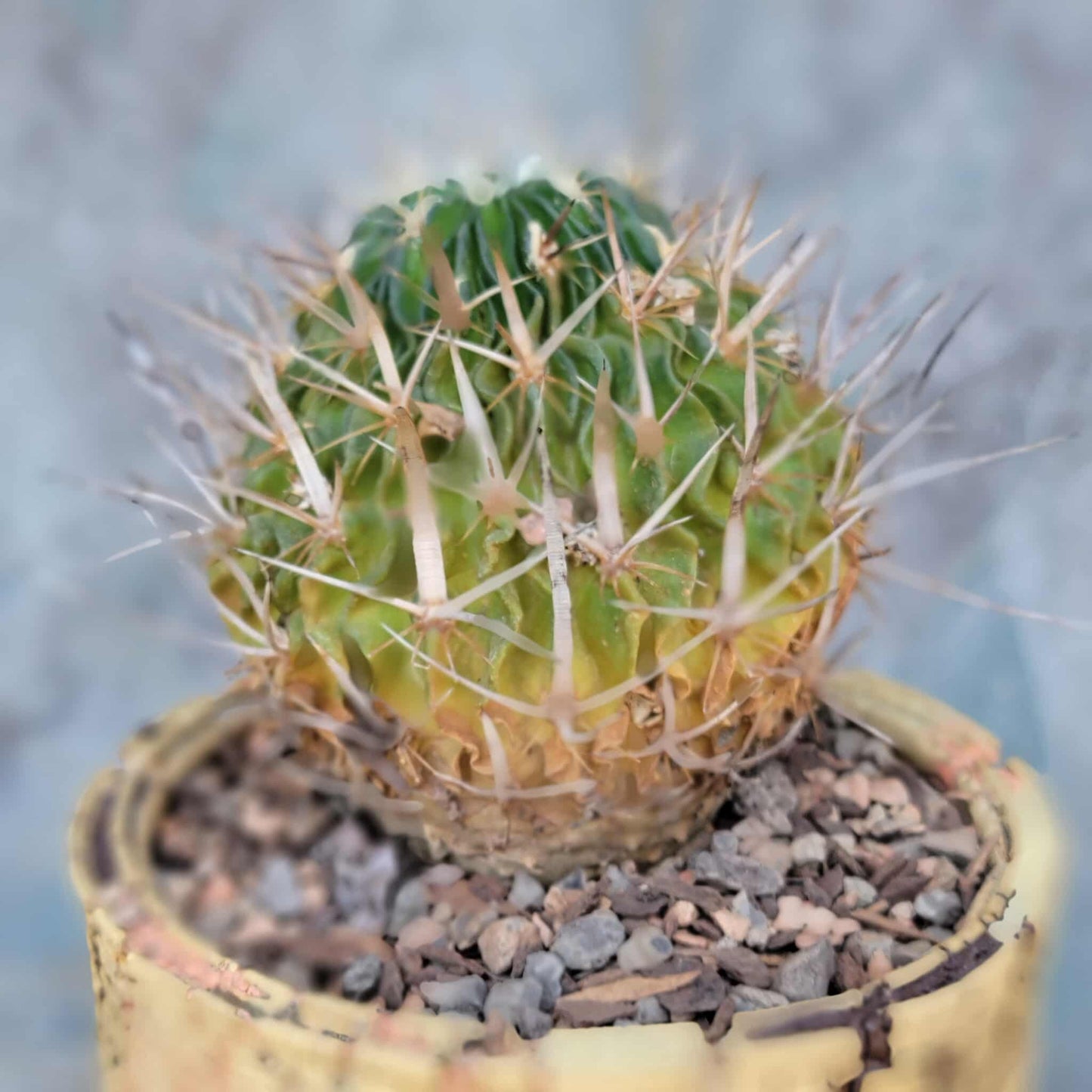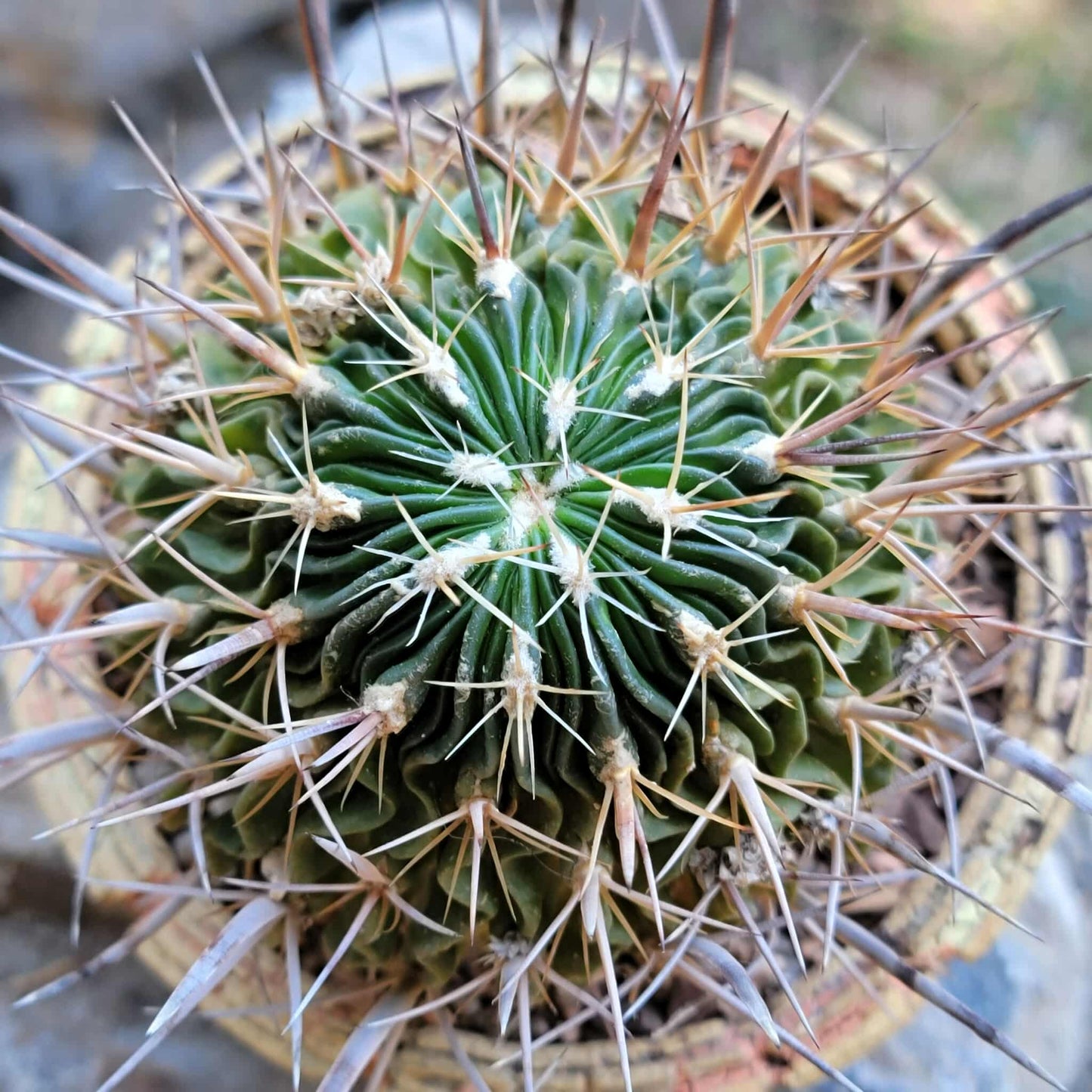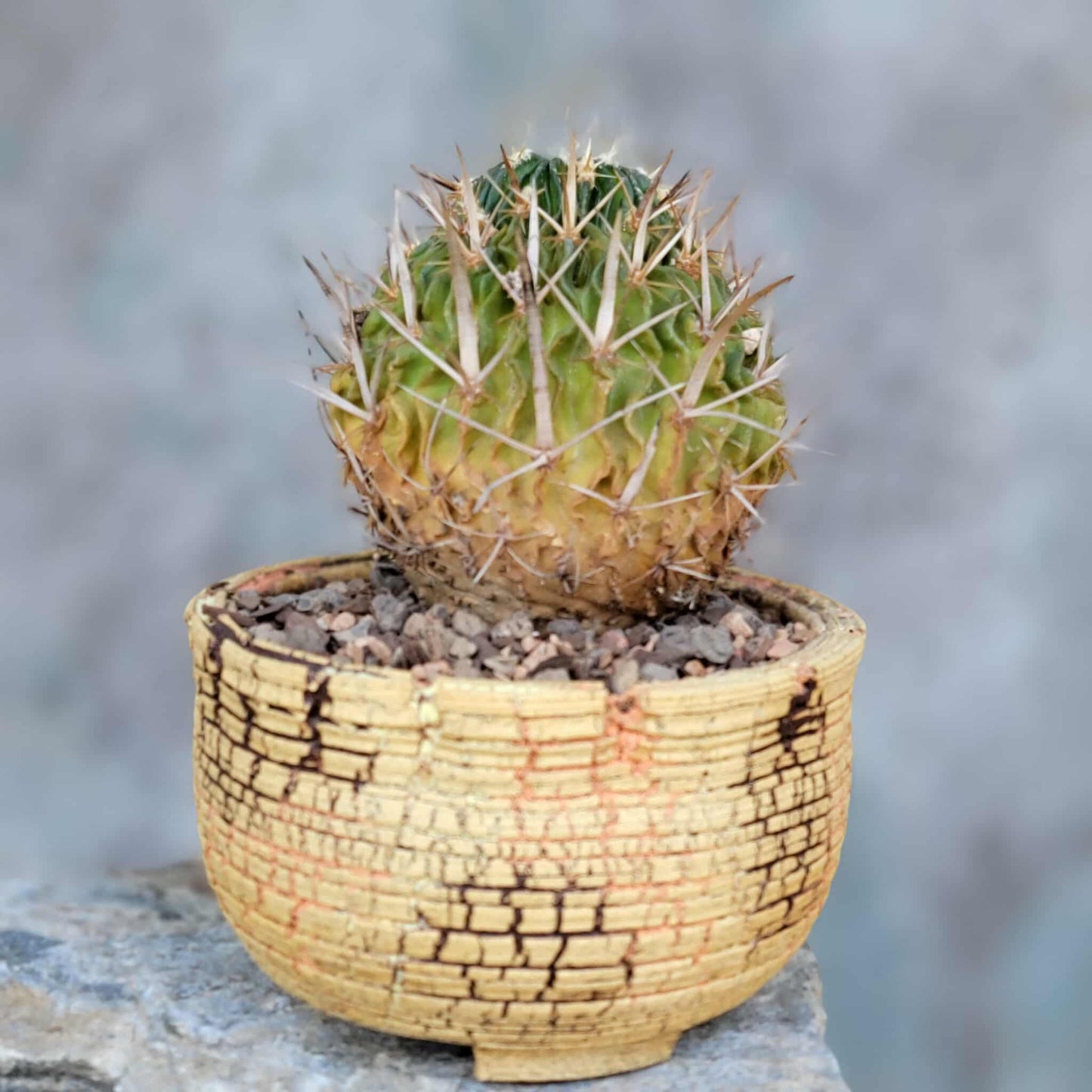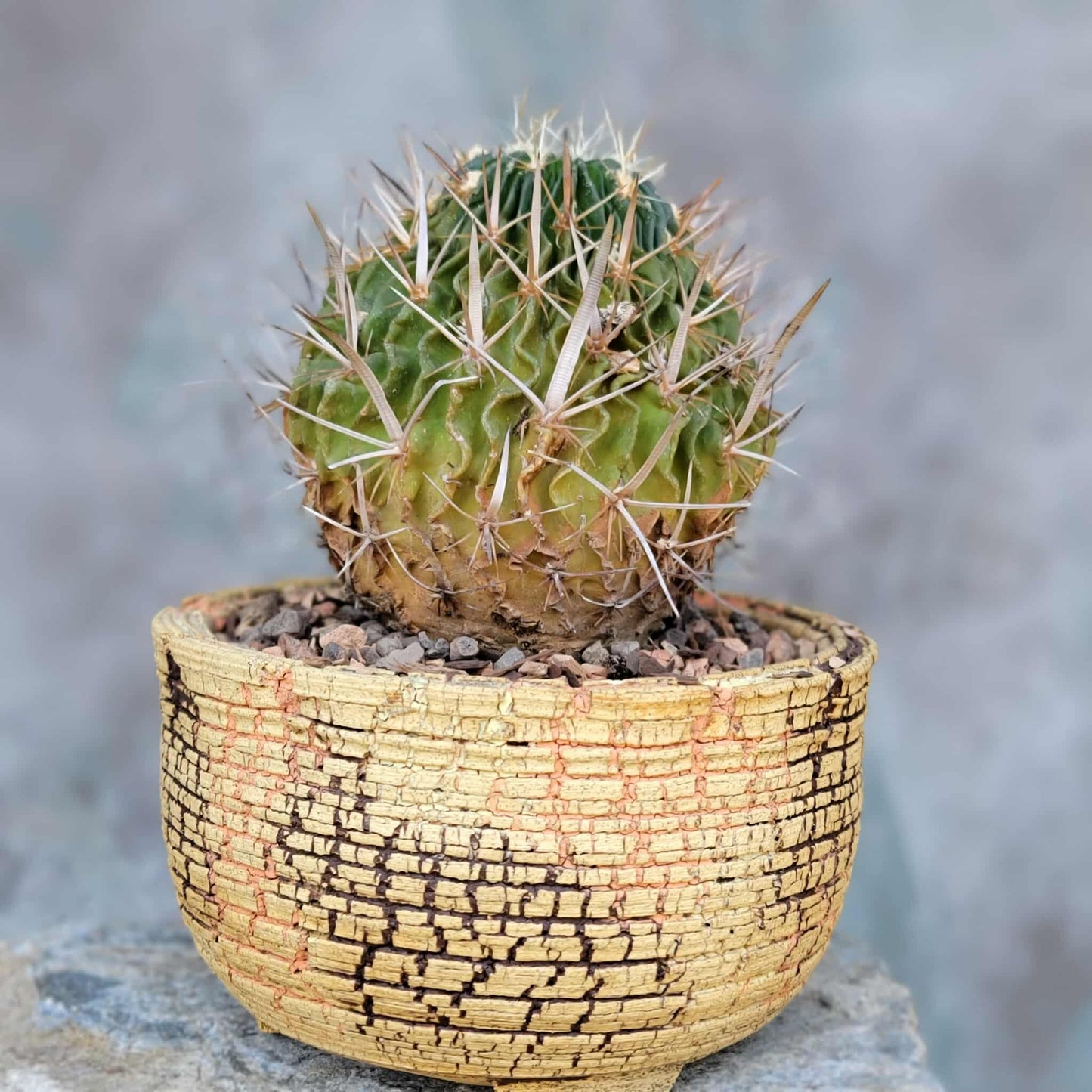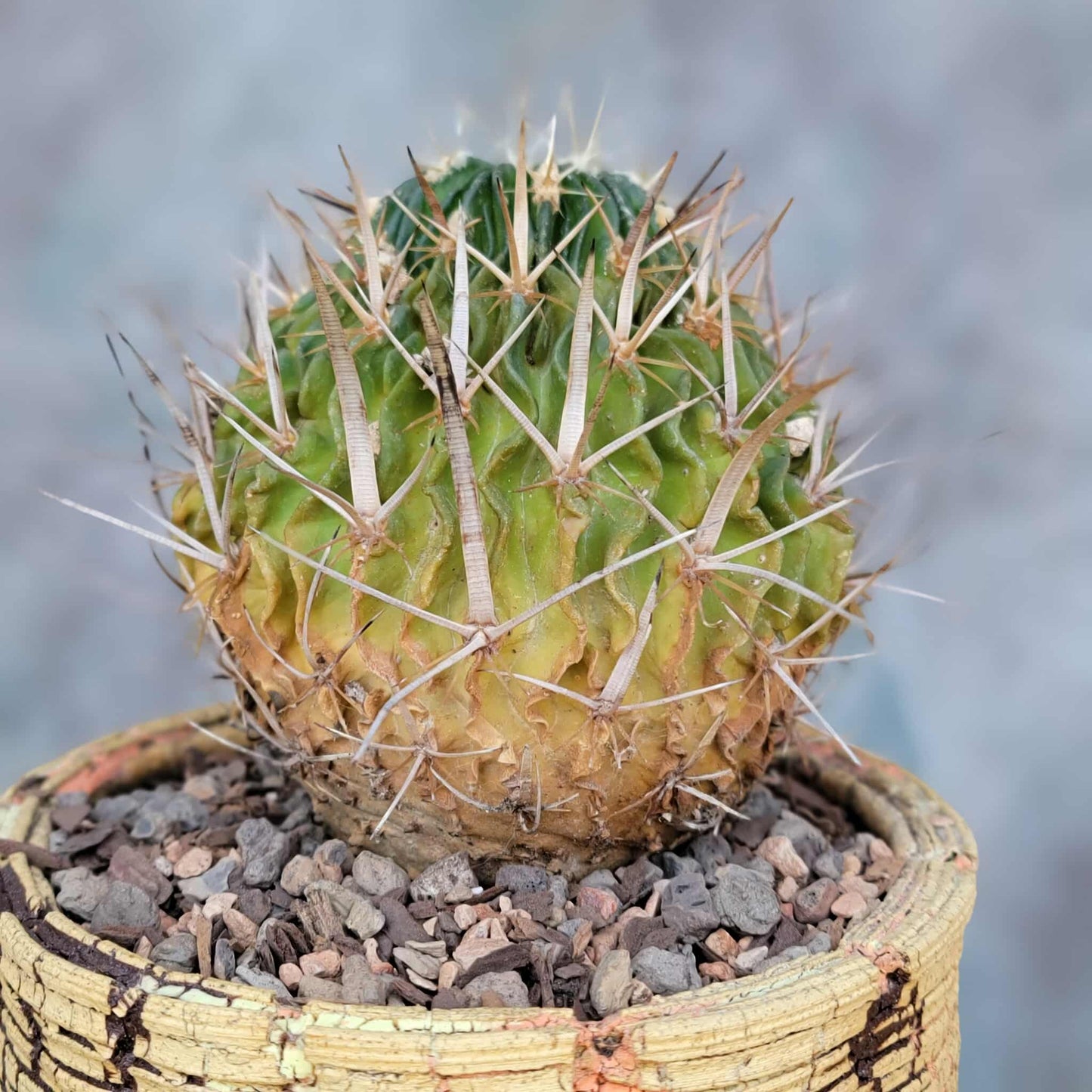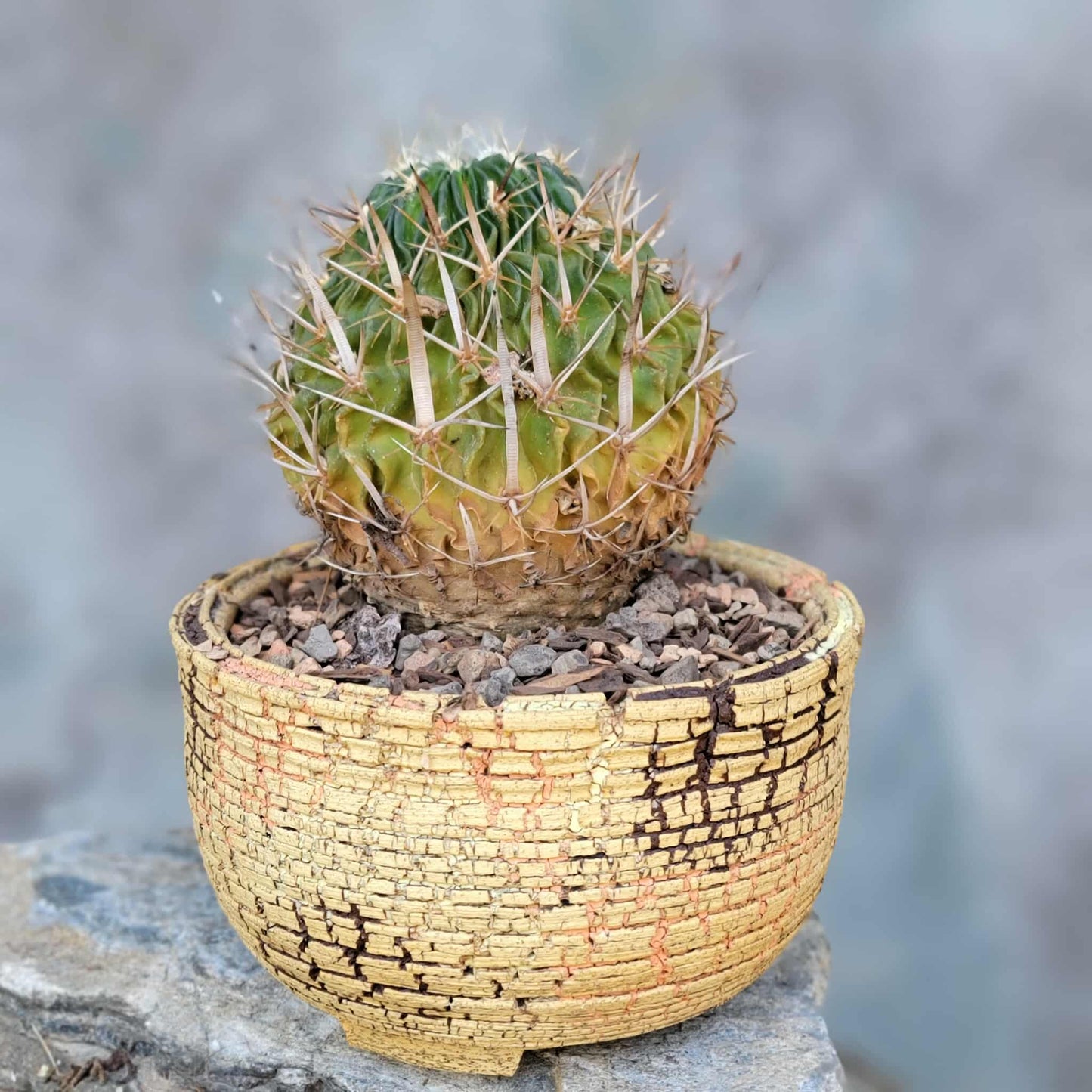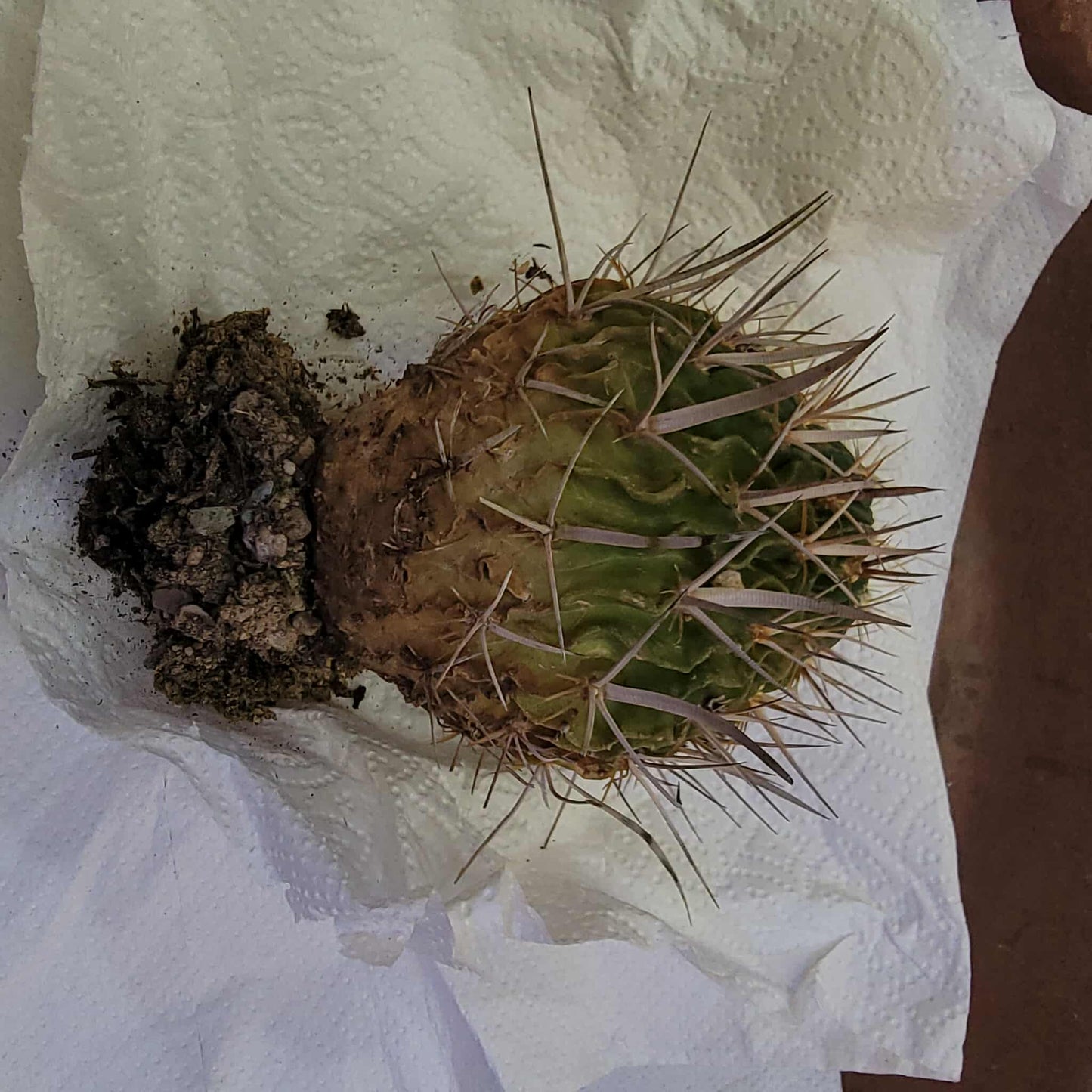Shangri-Ha Cactus Ranch
Stenocactus multicostatus subsp. Zacatecasensis
Stenocactus multicostatus subsp. Zacatecasensis
Couldn't load pickup availability
Stenocactus multicostatus subsp. Zacatecasensis
You will receive this exact specimen!
Measures 5.5”w x 4”h.
Roots as shown
Showcased here in one-of-a-kind handmade pottery (sold separately).
Will be shipped bare root.
Taxonomy and naming
Stenocactus multicostatus subsp. zacatecasensis is a recognized subspecies of the Stenocactus multicostatus, also known as the "Brain Cactus" due to its distinctive wavy ribs. It is also known as Echinofossulocactus multicostatus var. zacatecasensis, and some sources may list it under this synonym.
Origin and habitat
This cactus subspecies originates from Mexico, specifically the northern Zacatecas region. Its natural habitat consists of dry, grassy meadowlands at high elevations. During drought periods, it often shelters itself within the rocky soil.
Physical characteristics
Stenocactus multicostatus subsp. zacatecasensis is a small, slow-growing cactus, typically reaching a height of 2.5 inches (6 cm) and a width of 2.4 to 4 inches (6-10 cm). Its most striking feature is its numerous, very thin, wavy ribs, which can number up to 120 or even 144 in some varieties.
The cactus's areoles, covered in white felt when young, produce prominent spines. There are typically 10 to 12 radial spines, up to 10mm long, which are usually cream-white. In addition, the cactus features three brownish central spines, with the middle one being flattened and longer than the other two.
In early spring, the cactus produces flowers that are white or very pale pink with a purplish mid-vein. These flowers are 3-4 centimeters (about 1.2-1.6 inches) wide.
Cultivation and care
Stenocactus multicostatus subsp. zacatecasensis is relatively easy to care for and is a popular choice for both beginners and experienced collectors. Its small size makes it particularly well-suited for container gardening.
· Light: This cactus requires a lot of light to develop its characteristic spination. It prefers full sun but benefits from light shade during the hottest summer months. If grown indoors, a south or west-facing window is ideal.
· Water: It prefers to stay on the dry side and should only be watered when the soil has completely dried out. Overwatering can lead to rot, particularly given the species's sensitive root system. Watering should be significantly reduced or even halted during the winter months to encourage spring blooming.
· Soil: It thrives in well-draining mineral potting soil. A cactus mix amended with sand or fine pumice up to 50% is suitable.
· Temperature: While tolerant of cool weather, it prefers temperatures above 70°F (21°C) in the summer. It can tolerate temperatures down to about 20-25°F (-4 to -6.7°C) when dormant and kept dry.
· Repotting: Repotting should be done every two to three years or when the plant outgrows its pot. Early spring, just as the plant emerges from dormancy, is the ideal time to repot.
Propagation
This subspecies can be propagated from seeds or by removing offsets (pups) from the mother plant. Seed propagation can be a rewarding process, though seedlings are sensitive to strong light and dry conditions and require frequent repotting.

